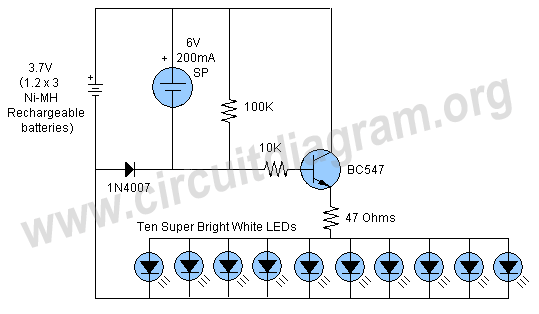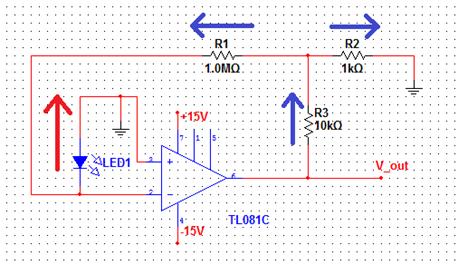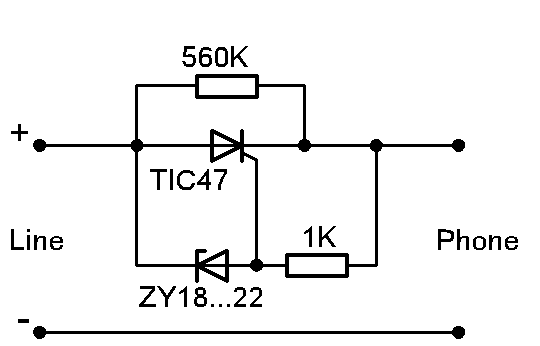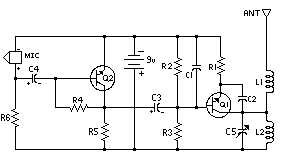
automatic solar garden light circuit

Schematic of an automatic solar garden light circuit with 10 super bright white LEDs that will automatically activate at night.
The automatic solar garden light circuit is designed to harness solar energy for illumination purposes during nighttime. The circuit typically consists of a solar panel, a rechargeable battery, a charge controller, a light sensor, and a series of ten super bright white LEDs.
The solar panel converts sunlight into electrical energy, which is used to charge the rechargeable battery during the day. The charge controller regulates the voltage and current from the solar panel to ensure that the battery is charged safely and efficiently.
At dusk, the light sensor detects the decrease in ambient light levels and activates the circuit. This triggers the LEDs to illuminate, providing bright light for the garden area. The use of super bright white LEDs ensures high luminosity while maintaining low power consumption, which is essential for maximizing the efficiency of the solar-powered system.
The circuit may also include additional components such as resistors to limit current flow to the LEDs, diodes to prevent reverse current from damaging the battery, and a switch for manual control if desired. The entire assembly is typically housed in a weather-resistant enclosure to protect the electronic components from environmental elements, ensuring reliable operation throughout various weather conditions.
Overall, this automatic solar garden light circuit represents an efficient and sustainable solution for outdoor lighting needs, utilizing renewable energy sources to provide illumination without the need for external power sources.Schematic of an automatic solar garden light circuit with 10 super bright white LEDs which will automatically activate at night. .. 🔗 External reference
The automatic solar garden light circuit is designed to harness solar energy for illumination purposes during nighttime. The circuit typically consists of a solar panel, a rechargeable battery, a charge controller, a light sensor, and a series of ten super bright white LEDs.
The solar panel converts sunlight into electrical energy, which is used to charge the rechargeable battery during the day. The charge controller regulates the voltage and current from the solar panel to ensure that the battery is charged safely and efficiently.
At dusk, the light sensor detects the decrease in ambient light levels and activates the circuit. This triggers the LEDs to illuminate, providing bright light for the garden area. The use of super bright white LEDs ensures high luminosity while maintaining low power consumption, which is essential for maximizing the efficiency of the solar-powered system.
The circuit may also include additional components such as resistors to limit current flow to the LEDs, diodes to prevent reverse current from damaging the battery, and a switch for manual control if desired. The entire assembly is typically housed in a weather-resistant enclosure to protect the electronic components from environmental elements, ensuring reliable operation throughout various weather conditions.
Overall, this automatic solar garden light circuit represents an efficient and sustainable solution for outdoor lighting needs, utilizing renewable energy sources to provide illumination without the need for external power sources.Schematic of an automatic solar garden light circuit with 10 super bright white LEDs which will automatically activate at night. .. 🔗 External reference





